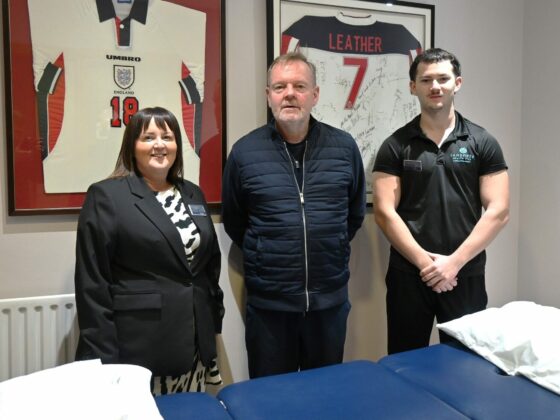
For too long, many hotels have operated like a collection of independent city-states. Marketing does its thing, Reservations has its targets, Housekeeping focuses on room turnover, and F&B manages its outlets. Each department, while often filled with dedicated professionals, works within its own silo, striving for efficiency within its narrow confines. But what if this very structure, once perhaps seen as efficient, is now the biggest barrier to truly exceptional guest experiences?
The truth is, our guests don’t experience our hotels in departmental slices. They experience a continuous journey, a narrative that begins long before they step foot in the lobby and extends well after they’ve checked out. It’s time we tore down the internal walls and rebuilt our operations around this fundamental truth.
The Old Guard: How Did We Get Siloed?
Why did hotels adopt this fragmented approach? It likely stems from early 20th-century management theories, like Frederick Winslow Taylor’s “Scientific Management.” This philosophy championed specialization, breaking down complex tasks into smaller, manageable parts, with each part handled by a specialist. The thinking was that specialization bred efficiency. And for a specific era of mass production and standardized service, perhaps it did.
In this model, a hotel became a series of specialized units:
- The Front Office handles check-in/out.
- Housekeeping cleans rooms.
- Reservations takes bookings.
- Sales sells rooms and events.
- Marketing attracts potential guests.
Each department optimized its processes, often with little understanding or incentive to consider the impact on the overall guest experience. The “efficiency” gained in one silo frequently created friction or a disjointed experience for the guest as they were passed from one department to the next.
The New Imperative: Orchestrating the Guest Journey
Today’s traveler craves seamless, personalized, and memorable experiences. They don’t care about our internal departmental structures. They care about their journey. To meet and exceed their expectations, we must reorient our entire hotel operation around the core guest journey, which can be understood in five key stages:
1. ATTRACT: Becoming the Desired Destination
-
- What it means: This is about more than just general advertising. It’s about deeply understanding your ideal guest profile and crafting a compelling brand story, image, and online presence that resonates specifically with them. It’s ensuring your hotel stands out to the right audience, making them want to choose you over any other.
- Silo trap: Marketing runs campaigns, but are they aligned with the actual on-site experience or the capacity of the sales team to convert specific types of leads?
- Journey focus: Marketing, Sales, and even Revenue Management collaborate to define target personas, craft aligned messaging, and ensure the value proposition is clear and consistently communicated across all touchpoints.
2. CAPTURE: Sealing the Deal, Seamlessly
-
- What it means: Once a potential guest is interested, the booking process must be intuitive, easy, and reassuring. This includes your website’s usability, the clarity of your offerings, the efficiency of your reservation system, and the responsiveness of your direct booking channels.
- Silo trap: Reservations focuses solely on filling rooms based on availability, perhaps without full insight into marketing promotions or the specific needs of guests attracted by certain campaigns.
- Journey focus: Reservations, IT, and Marketing work together to ensure a frictionless booking experience, from initial inquiry to confirmation, making it easy for guests to commit.
3. PREPARE: Setting the Stage for an Effortless Stay
-
- What it means: The period between booking and arrival is a golden opportunity to enhance the upcoming stay and build anticipation. This involves proactive communication, offering personalized upsells and cross-sells (think spa treatments, restaurant reservations, room upgrades, local experiences), and gathering information to tailor the stay. It’s about making the guest feel valued and prepared.
- Silo trap: The Concierge, F&B, and Spa only engage if the guest actively reaches out. Upselling might be an afterthought or aggressively pushed at check-in.
- Journey focus: A dedicated pre-arrival team (or cross-functional effort from Reservations, Marketing, Concierge, and F&B) curates pre-stay communications, offers relevant services, and ensures guest preferences are noted and disseminated to relevant departments before arrival.
4. DELIVER: Crafting In-Stay Excellence
-
- What it means: This is the core of hospitality, delivering a flawless, personalized, and memorable experience from check-in to check-out. Every interaction, every touchpoint, every service must align with the promises made and the expectations set.
- Silo trap: Front Office handles check-in, Housekeeping cleans, F&B serves, Maintenance fixes, often reacting to issues rather than proactively creating positive moments. A breakdown in one area (e.g., a room not ready, a poor dining experience) can tarnish the entire stay, with little cross-departmental effort to recover service seamlessly.
- Journey focus: All guest-facing (and many heart-of-house) departments operate as a unified team. Morning briefings involve representatives from key areas to anticipate guest needs. Technology empowers staff with guest information, allowing for personalized interactions. There’s a shared responsibility for guest satisfaction, enabling quick resolution and proactive service.
5. REVIEW: Listening, Learning, and Evolving
-
- What it means: The journey doesn’t end at check-out. It is crucial to actively solicit and analyze feedback from both guests (reviews, surveys, social media) and employees (who are on the front lines). This information is invaluable for identifying pain points, celebrating successes, and continuously improving the guest journey.
- Silo trap: Guest reviews might be handled by Marketing or a GM’s assistant, with insights not systematically shared or actioned by operational departments. Employee feedback might not have a clear channel for impacting process changes.
- Journey focus: A cross-departmental team regularly analyzes all feedback. Insights are used to refine processes across all stages of the guest journey. This creates a virtuous improvement cycle, demonstrating to guests (and staff) that their voices are heard and valued, fostering loyalty and driving future bookings.
Breaking Down the Walls: Towards a Guest-Centric Culture
Transitioning from silos to a guest-journey orientation isn’t just about redrawing an organizational chart. It’s about fostering a culture of collaboration, empathy, and shared ownership for the guest experience. It means:
- Cross-functional teams: Form teams responsible for specific stages of the guest journey.
- Shared information: Utilize CRM and PMS technologies to give all relevant staff a holistic view of the guest.
- Empowered employees: Give staff the authority and training to solve guest issues and create “wow” moments, regardless of their department.
- Aligned incentives: Reward teams based on overall guest satisfaction and journey success, not just departmental KPIs.
- Continuous communication: Implement regular meetings and communication channels that bridge departmental divides.
The era of departmental fiefdoms is over. The future of hospitality lies in orchestrating a beautiful, seamless, and personalized symphony of service, with the guest journey as our score. Hotels that embrace this shift won’t just survive; they’ll thrive, building lasting guest loyalty and a reputation for excellence that echoes far beyond their physical walls.
Is your hotel ready to change its tune?






